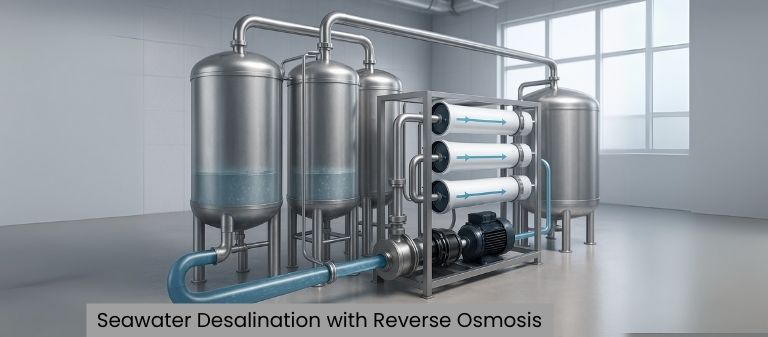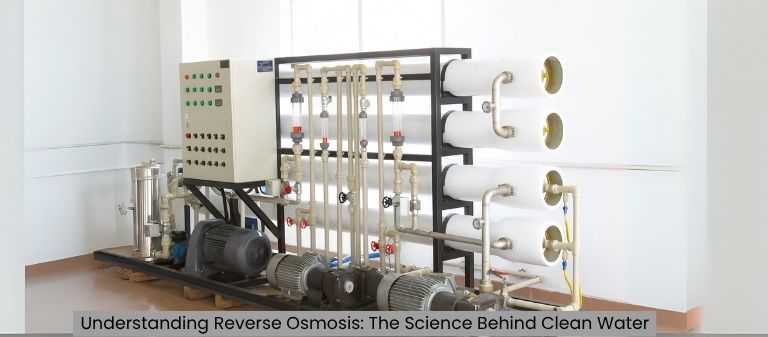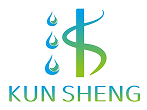
Objective:
This article aims to provide a comprehensive understanding of how seawater desalination—particularly through reverse osmosis (RO)—transforms saltwater into clean, drinkable freshwater. It explores the growing global need for desalination, breaks down the reverse osmosis process, highlights technological innovations by Kunsheng Water Treatment Co., Ltd., and examines the real-world applications and benefits of this life-saving technology.
Water scarcity is no longer a distant problem—it’s already here. While Earth is known as the “blue planet,” only about 3% of its water is freshwater, and even less is accessible for human use. That means billions of people are fighting over a tiny slice of the world’s water pie. As populations grow, industries expand, and climate change disrupts traditional water sources, access to safe, clean water is becoming a luxury for many communities. Desalination offers a way out.
Desalination, in simple terms, is the process of removing salt and other impurities from seawater to make it drinkable or usable for agriculture and industry. It allows regions without natural freshwater sources to create their own, transforming the vast, undrinkable oceans into a sustainable supply of freshwater. It’s not just a clever science trick—it’s a survival tool.
Countries such as Saudi Arabia, Australia, Israel, and even states like California heavily rely on desalination plants to meet their growing water demands. Whether it’s drought-stricken rural areas or densely populated coastal cities, desalination plants ensure water flows even when rain doesn’t. And while there are different types of desalination methods, reverse osmosis has taken the lead due to its energy efficiency, scalability, and high output of purified water.
In a world where water security is quickly turning into a national security issue, the ability to produce freshwater from seawater is a game-changer. Reverse osmosis isn’t just transforming water—it’s transforming futures.
It’s a cruel irony: some of the world’s thirstiest places sit right next to endless bodies of water. Coastal cities, islands, and arid nations often have abundant access to seawater, yet freshwater is either imported at great expense or rationed during dry spells. These regions are under immense pressure, balancing booming populations, agricultural needs, and industrial growth—all while battling dwindling water supplies.
Climate change is only fanning the flames. Rainfall patterns are becoming more erratic, groundwater sources are shrinking, and rivers that once provided lifelines are now drying up seasonally. Meanwhile, urbanization adds even more strain on municipal water systems. In such areas, seawater desalination isn’t optional—it’s essential.
Reverse osmosis desalination systems are a perfect fit for these challenges. Unlike traditional sources that depend on natural cycles, desalination offers a climate-independent solution. It provides a steady, year-round supply of freshwater that can support everything from basic household use to high-demand industrial applications.
Take the Middle East, for example—a region known for extreme aridity and limited freshwater resources. Countries like the UAE and Saudi Arabia have become global leaders in desalination, with massive RO plants turning millions of gallons of seawater into fresh drinking water daily. Even cities in California and Australia are turning to this solution as prolonged droughts strain local reservoirs.
For these regions, desalination is more than technology—it’s a promise of stability, resilience, and independence. As more nations feel the pressure of water scarcity, the demand for RO-based seawater desalination is only expected to surge.
At its core, reverse osmosis (RO) is a brilliant blend of physics, chemistry, and engineering. It works by pushing seawater through a semi-permeable membrane that allows water molecules to pass through while trapping salts, minerals, and other impurities. What comes out on the other side? Clean, fresh water that’s safe to drink, use in agriculture, or run through industrial systems.
Let’s break it down simply: imagine a super-fine filter that only water can pass through. This filter—called an RO membrane—is designed to separate even the tiniest dissolved particles from the water. The process requires pressure—often high pressure—to force the seawater through the membrane. It’s called “reverse” osmosis because it goes against the natural osmotic flow, which would normally move freshwater toward saltwater. In this system, we’re doing the opposite: pushing saltwater to give us freshwater.
The quality of the output water depends heavily on the quality of the RO membrane and the pressure applied. The more advanced the membrane, the higher the salt rejection rate—meaning more salt is left behind, and more pure water is produced. Modern RO membranes can remove up to 99% of dissolved salts and contaminants.
This technology is not only effective but also scalable. From small portable RO systems used in disaster zones to massive plants serving entire cities, reverse osmosis adapts to meet water demands across every scale.

An RO desalination system isn’t just a filter—it’s a complex setup with multiple stages that work together seamlessly to ensure efficiency, safety, and high output. Let’s take a look at the critical components:
Together, these components create a powerhouse system that transforms raw, salty ocean water into a critical resource for homes, cities, and industries around the world.
Kunsheng Water Treatment Co., Ltd. stands as a beacon of innovation in the water treatment industry. With years of experience and a solid reputation, the company has positioned itself as a global leader in designing and manufacturing cutting-edge seawater desalination plants. From compact units for small coastal towns to massive systems that serve industrial zones, Kunsheng’s expertise spans across scale, geography, and sector.
What sets Kunsheng apart is its dedication to solving real-world water challenges using the most efficient, sustainable, and user-friendly technologies. Their systems are designed with modularity in mind, making them easy to install, expand, and maintain. Whether it’s a drinking water factory in Africa or an industrial zone in Australia, Kunsheng delivers tailor-made desalination solutions built to last.
Their specialization in reverse osmosis desalination ensures that every system is equipped with the most advanced membranes, energy-saving technologies, and automation features. And it’s not just about machines—their global service and support network ensures that clients receive guidance, maintenance, and upgrades long after installation.
From countries facing extreme water stress to fast-developing regions looking for sustainable infrastructure, Kunsheng is at the forefront of turning saltwater into hope.
Kunsheng’s global footprint is impressive. With installations across continents, the company’s desalination plants are operational in regions like:
These projects aren’t just engineering marvels—they’re lifelines. They enable sustainable agriculture in arid regions, support high-tech industries with pure process water, and bring safe drinking water to communities that once relied on unsafe sources.
In the pre-treatment stage, seawater is filtered to remove particles like sand, silt, and microorganisms. This step uses multi-stage filtration and chemical dosing to ensure the water entering the RO membranes is clean and stable. Kunsheng systems include automated filtration and anti-scalant dosing to protect the membranes and extend their lifespan, reducing the need for frequent maintenance.
Once pre-treated, the seawater is pressurized using high-performance pumps. These pumps create the force needed to push water through the RO membranes. Kunsheng integrates energy-efficient, corrosion-resistant pumps with variable frequency drives to optimize performance and reduce electricity consumption, making the process both powerful and cost-effective.
The pressurized seawater flows through semi-permeable reverse osmosis membranes that separate fresh water from salts and impurities. Kunsheng uses advanced RO membranes with high salt rejection rates to ensure maximum water purity. The modular design of the systems allows scalability for different capacity needs, from small communities to large industrial zones.
After filtration, the water goes through post-treatment to improve taste, adjust pH levels, and add essential minerals. This step also includes disinfection using UV or chlorine to ensure the water is microbiologically safe. Kunsheng’s systems are designed to meet international standards for potable water, delivering high-quality, ready-to-use freshwater.
Kunsheng has years of global experience delivering turnkey desalination solutions. Their systems are trusted across the USA, Australia, the Middle East, and beyond for their durability, efficiency, and performance.
Each project is tailored to the client’s needs—whether for a small community or a large industrial complex. Kunsheng provides full support from design to installation and ongoing maintenance, ensuring smooth, long-term operation.
Kunsheng systems are designed to reduce brine output and manage waste responsibly. By using energy recovery and brine treatment technologies, they help clients meet environmental standards and minimize impact on marine ecosystems.
While RO desalination is highly effective, energy use and brine disposal remain key challenges. Kunsheng continues to invest in R&D to develop more efficient membranes, smarter systems, and sustainable technologies for the future of global water security.
Reverse osmosis desalination has become a reliable solution to the world’s water scarcity problems. With Kunsheng Water Treatment Co., Ltd., clients receive efficient, eco-friendly, and customizable systems that turn seawater into high-quality freshwater—helping communities, industries, and nations secure a better future.


Olivia : +86 15168506513
Lydia : +86 15253672282

